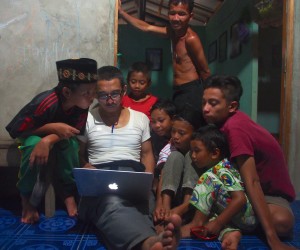“You can’t teach anatomy without bodies. Or at least you couldn’t until now,” says Monash University’s Paul McMenamin.
He and his colleagues are printing 3D plastic body parts of unprecedented detail and accuracy that have the potential to revolutionise anatomy teaching.

Anatomy students need a high degree of familiarity with the intricate details of the human body. That ideally comes with repeated handling and hands-on study. But students are often reluctant to touch a cadaver any more than necessary.
Removing the emotional, ethical and physical restrictions to close handling and repeated study improves the students’ familiarity with the human body. Another advantage of the printing is the expertly applied false colouring picking out intricate nerves, veins, arteries and ligaments that are much harder to identify in preserved cadavers.
















